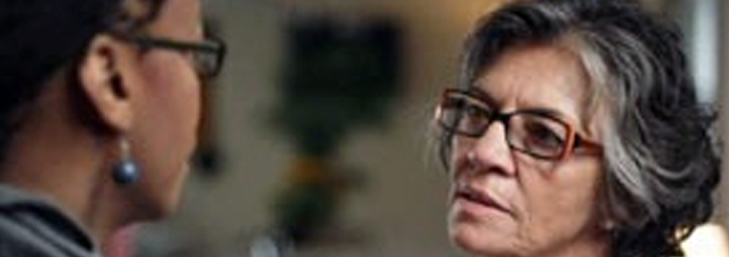

Informing patients of their diagnoses is generally seen as necessary if patients are to exercise their right to make decisions about treatment, advanced directives, and end-of-life care.
Yet patients and their families may hold different ideas about how much information should be disclosed and to whom. They may feel strongly about shielding the ill individual from distressing information, and the family may expect to be involved in decision making with or for the patient.
For some, truthful disclosure may conflict with cultural beliefs about hope, wellness, and the wellbeing of individuals.
Conflicting values are most likely to arise in setting goals for palliative and end-of-life care in three critical areas: attitudes toward advance directives and end-of-life care, full disclosure of a diagnosis, and individual versus family-based decision making.
Searight, R.H. & Gafford, J. 2005

Beauchamp, T.L. & Childress, J.F. 1995
Mr. Sato, a 73-year-old Japanese American, came to the hospital on Saturday afternoon with his daughter. They reported he had been up all night with nausea and vomiting, and he complained of unrelieved back pain.
Mr. Sato appeared jaundiced. On further questioning, he revealed that he had unexplained weight loss in recent months. He was admitted and given oxycodone for his pain. A CT scan revealed a mass in the head of his pancreas and several lesions in his liver and lungs, suggestive of metastatic disease.
Dr. Miller, Mr. Sato's primary care physician, reviewed the CT scan with the radiologist. Knowing that the likely diagnosis is adenocarcinoma with the pancreas as the primary site and that median survival is three to six months, Dr. Miller is on her way to Mr. Sato's room to talk with him. She intends to break the news of the scan, explain the next steps such as biopsy, and prepare Mr. Sato for the treatment decisions that lie ahead.

Mr. Sato's daughter, Julie, stops Dr. Miller in the hallway outside her father's room. Watch the video and llisten to their conversation.

Mr. Sato's daughter has asked Dr. Miller not to disclose details of Mr. Sato's diagnosis to him and to allow her to make decisions about his care.

He doesn't want to know the details. He'll lose his strength and hope, which he needs to cope with his illness.
Dr. Miller must now reconcile Julie’s request to shield her father from his diagnosis and questions about treatment with her ethical duty to inform the patient.

Offering truth gives the patient the opportunity to decide how much information to receive.
The clinician attempts to learn from the patient how much he wants to know and offers the opportunity to learn the truth at whatever level of detail the patient desires. The patient can then decide who should receive information and make decisions about his care if he does not wish to do so.
When families prefer to shield members from full disclosure of a life-limiting diagnosis, offering truth respects the family's wishes and protects the patient's right to choose.
Families may insist that the patient does not wish to be informed, but families can be mistaken. It is the patient who must choose. However, the clinician does not assume that the patient wishes to act alone. Instead, she asks him who is to be included in disclosure and decision making.
Freedman, 1998

Offering truth shifts the emphasis from the patient's right to make informed decisions to the patient's right to make choices about the level of information he wants. Choosing not to participate is still an exercise in autonomy.
Hern 1998
Dr. Miller decides she needs more information before deciding whether you can honor Julie’s wishes.
She assures Julie that she will ask Mr. Sato his preferences for how much he is told. She explains to Julie that she will confirm his preferences for who is to be informed and who is to make decisions and respect his wishes. Julie agrees, and they enter Mr. Sato's room.
If you were Dr. Miller, how would begin the conversation with Mr. Sato? Type your answer in the text box below. Watch the video that follows and compare Dr. Miller’s approach to yours.

Watch how Dr. Miller approaches Mr. Sato.

How was Dr. Miller's approach different from your own? Did she say anything you might use in the future with a patient?
Shielding family members from upsetting news is an important value for some people.
Japanese Americans have a long history of immigration to the United States. As a result, they range from first generation to fifth generation, with multiple levels of acculturation.
Among Japanese Americans, preferences about disclosure of diagnosis and prognosis (and desire to shield elderly or ill family members from distressing information about health) tend to vary with acculturation.
A preference for family-centered decision making tends to be consistent across generations.
Matsumura, et al. 2002
Patients and families from other cultures may also prefer limited or no disclosure to the patient and collective decision making by the family or social group.
Blackhall, et al. 1995
It’s best to ask about preferences, rather than making assumptions based on ethnicity or race


Then Dr. Miller talks with Julie, confirming that Mr. Sato does want his daughter to make decisions about his care.
Dr. Miller tells Julie about the pancreatic mass and the liver and lung lesions on Mr. Sato's CT scan. She explains that the likely diagnosis is metastatic adenocarcinoma, and she describes the biopsy procedure Mr. Sato will need to confirm the diagnosis. They talk briefly about treatment options if Mr. Sato does have metastatic disease, and they agree to arrange for the biopsy as soon as possible.


The patient's right to be informed is no less honored when the patient chooses to be relatively uninformed than it is when the patient is fully informed.
Freedman, 1993
Beauchamp, T.L. & Childress J.F, Principles of Biomedical Ethics, New York: 1994
Blackhall, L., Murphy, S., Frank, G., Michel, V., Azen, S. (1995). Ethnicity and attitude toward patient autonomy. Journal of the American Medical Association, 274 , 820-825.
Freedman, B. (1993). Offering truth: one ethical approach to the uninformed cancer patient. Archive of Internal Medicine, 153 , 572-576.
Gostin, L.O. Informed consent, cultural sensitivity, and respect for persons. JAMA, 1995 274(10); 844-845.
Hern, H. E., Jr., Koenig, B. A., Moore, L. J., & Marshall, P. A. “The difference that culture can make in end-of-life decision making.” Cambridge Quarterly of Health Ethics 1998; 7(1), 27-40.
Matsumura, S., Bito, S., Liu, H., Kahn, K., Fukuhara, S., Kagawa-Singer, M., & Wenger, N. (2002). Acculturation of attitudes toward end-of-life care: a cross-cultural survey of Japanese American and Japanese. Journal of General Internal Medicine, 17 , 531-539.
Searight, R.H. & Gafford, J. “Cultural Diversity at the End of Life: Issues and Guidelines for Family Physicians.” American Family Physician 2005; 71(3): 515-522.
This work was supported in part by grants from the Cambia Health Foundation and the National Institute of Nursing Research (NINR) at the National Institutes of Health (NIH. The content is solely the responsibility of the authors and does not necessarily represent the official views of the Cambia Health Foundation or the National Institute of Nursing Research.

Understanding your patient’s story, including their illness and life beyond their illness, helps you provide them the best care possible. These modules, presented in three parts, will introduce you to the communication skills needed to elicit the patient and family narrative.

This module briefly reviews the Triple Aim for improving health care, presents a video case study in which the Triple Aim is not met, and analyzes types of interprofessional conflict and strategies for resolving them.
After completing this module you will be able to:

Setting goals and making a plan for achieving them fosters hope and allows individuals and families to feel they have some control in their lives. As healthy aging progresses or incurable illness advances, individuals will change and adapt their health care goals...

The number of individuals who speak English with limited proficiency (LEP) or who don't speak the language at all is growing in the United States as the population becomes more diverse. Language differenced can create barriers between practitioners and patients and affect the quality of patient care.
In the case of Mrs. Rodriguez, you will learn how professional interpreters facilitate important clinical communication, enhancing the patient-practitioner relationship and the quality of care....

Given how much there is to learn about facilitating family conferences, focusing attention on emotions may seem like a strange use of time. However, we’ve found that effectively addressing patient and family emotions helps avoid many of the common pitfalls in these encounters, including conflict...

Patients, families and members of the interprofessional palliative care team draw upon deeply held personal values and professional standards to set goals of care.
Differing values and standards for care may give rise to conflicts between...

Patients with chronic or life-limiting disease may supplement their treatment with complementary and alternative medicine (CAM). However, less than 40% of patients tell their provider about their CAM use. Even when the physician asks them directly, they may be reluctant to discuss their CAM use....